buy Pregabalin with mastercard 11 February 2021
buy provigil egypt I have to make this quick. My time for blogging is very limited (and I have many mostly-finished blogs I need to get posted). But I thought this quirk in some medieval zodiacs might be interesting to Voynich researchers.
Mislabeled or Misunderstood
In a cruise through eBay a couple of years ago I noticed that many small sculptures, pieces of jewelry, and designs on ceramics that were based on animals were mislabeled. Foxes labeled as mice, hedgehogs labeled as boars, deer labeled as foxes. These were not occasional errors, they were common. Apparently, some people don’t recognize animals, especially if they are small.
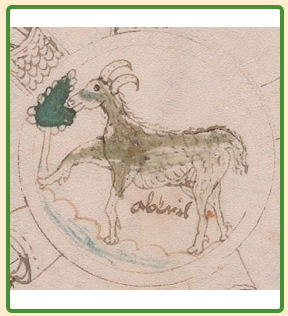
I’ve already posted a blog on how unrealistic medieval animal drawings can be, but sometimes this is because the animal was unknown. For example, unicorns sometimes resembled a cross between a goat and a rhino. Tigers were sometimes drawn as stripy horses. Elephants were sometimes cowlike animals with long noses.
I have also seen marginal drawings of goats labeled as sheep (and sometimes vice-versa). The VMS pic where one would expect a sheep, in the slot usually assigned to Aries, does have fairly curvy horns but otherwise is quite goat-like:
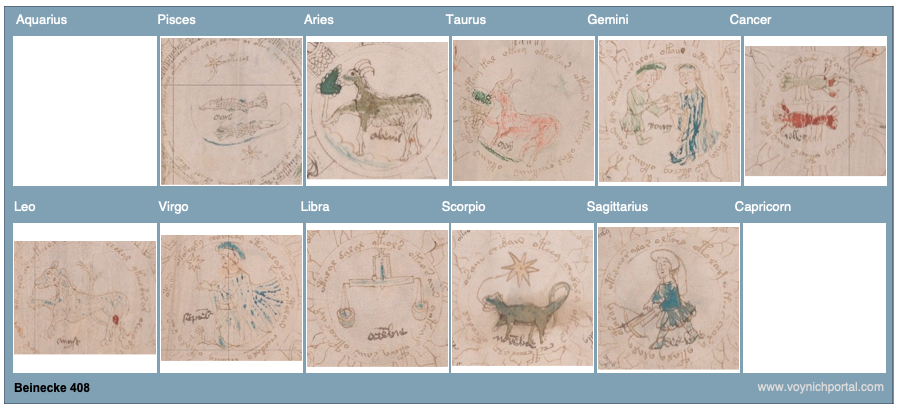
Does this happen in other medieval zodiacs? Yes, sometimes. Here are some examples.
Goat-Like Aries or Misplaced Figures
In the first example, extracted from a wheel illustration, the constellation Aries is somewhat goatlike, especially considering that medieval sheep were often drawn with long tails. However, it can still be distinguished from the goat by having slightly more curved horns:
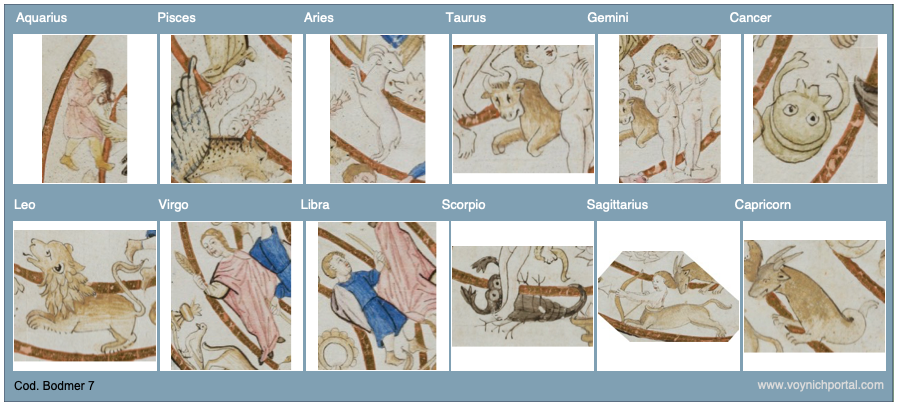
The following drawings are a bit degraded, so it’s hard to see clearly, but the goat and ram have been transposed. The drawing in Aries has long horns and a short, upturned tail (goat-like), and the one in Capricorn has shorter, curved horns and a longer down-turned tail:
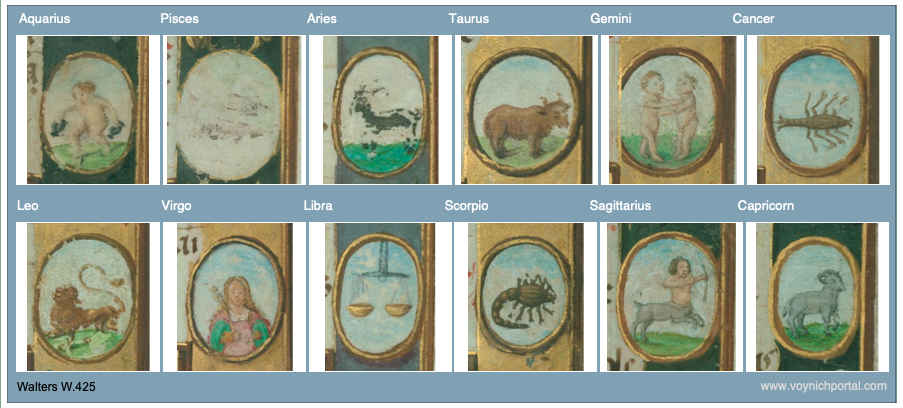
In this example, the figures are out of order. The illustrator mistakenly drew Capricorn (goat) and Sagittarius (centaur) in the months for Aries (ram) and Taurus (bull).
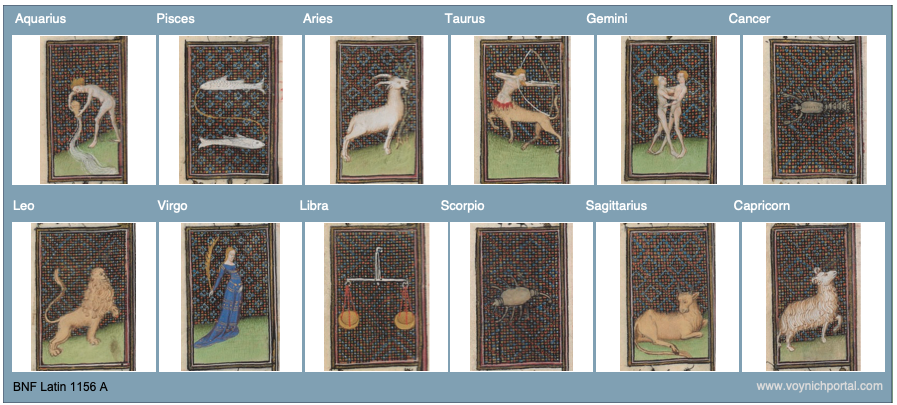
In the next example, Aries has a goatlike beard and the traditional goat-fish has been used for Capricorn:
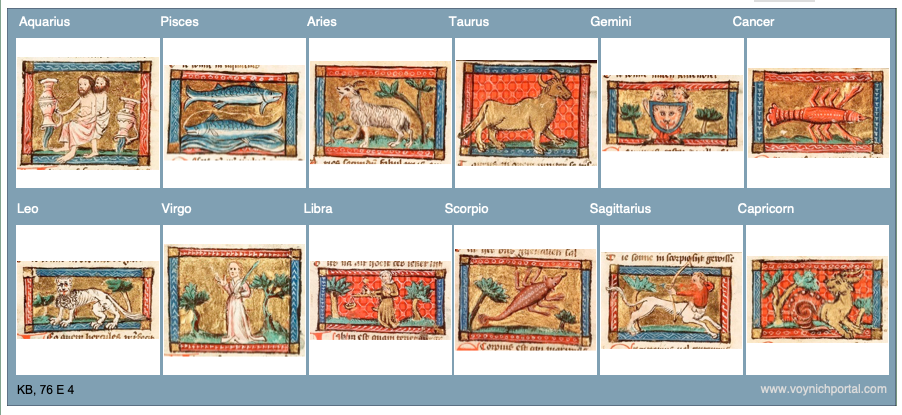
In this example, Aries has sheep-like wool combined with a goat-like tail and beard:
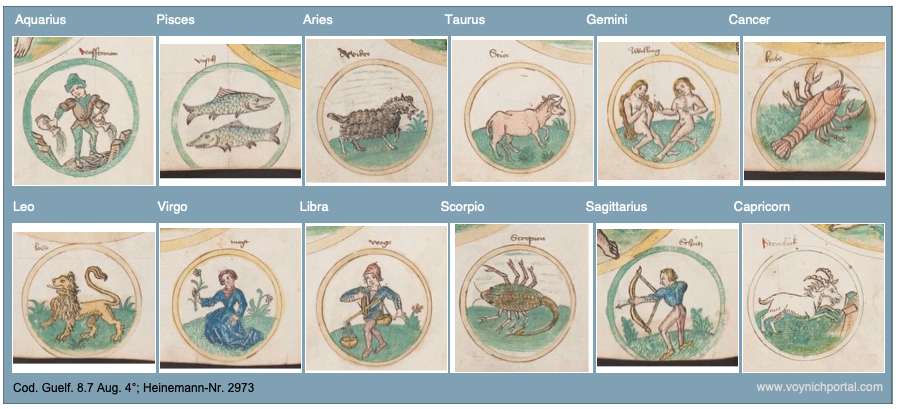
Sometimes the drawings are so similar, it’s difficult to tell the sheep from the goat. In this case the bodies are almost the same (Aries is slightly thicker, but not much). The main difference is the curl of the horns:
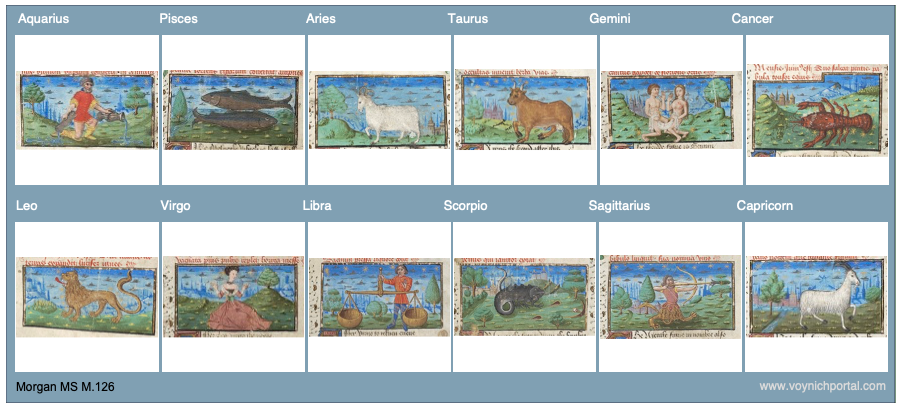
Summary
In general, in medieval zodiacs, Aries is depicted with curly horns and a puffy or long tail (usually pointing down), Capricorn usually has a shorter tail, sometimes upturned, with straighter horns and often a beard.
It doesn’t happen often, but Aries is sometimes drawn like a goat, and Capricorn is occasionally transposed with Aries. The VMS goat-like sheep in the Aries slot is somewhat unusual, but it’s not unprecedented, so it’s difficult to know if the deviation is lack of experience, a mistake, or a deliberate choice.
J.K. Petersen
© Copyright February 2021 J.K. Petersen, All Rights Reserved
